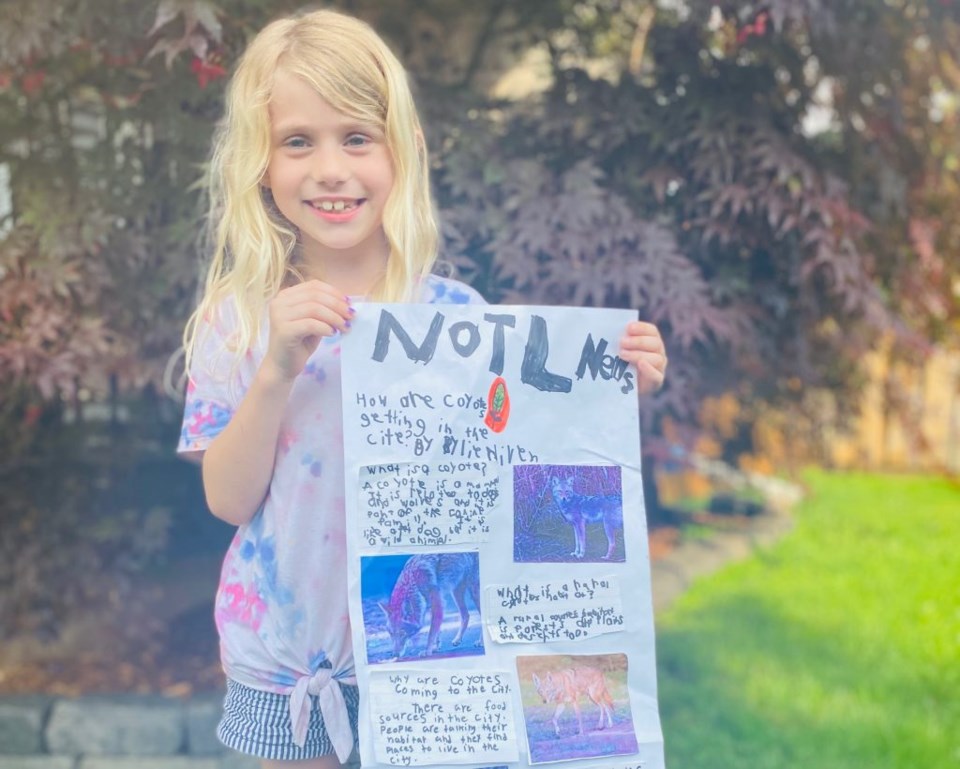
After months of urban coyote sightings and encounters around town, mostly in The Village but also other Old Town neighbourhoods, the coyotes appear to have returned to their rural habitat.
In an effort to pin down where coyotes are seen and what attracts them to specific areas, the town has an online coyote reporting system, with 200 reports submitted since the beginning of the year.
However, there hasn’t been one report of a sighting since May 26, CAO Marnie Cluckie said in her recent updates to councillors.
The uptick began in mid-March and sightings continued until early May, at which time they decreased significantly, says Marah Minor, the town’s communications coordinator.
Much of the success of efforts to discourage coyotes in urban areas can be attributed to efforts of the community to minimize wildlife food attractants, she says.
According to Coyote Watch Canada, because sightings have decreased does not mean coyotes are not present in the local landscape. “Coyotes have a home range that they inhabit. Sightings have decreased due to initiatives providing the community with educational information about best practices to minimize food attractants such as proper garbage handling, using appropriate bins/lids, feeding cats outdoors, enclosing compost, and taking down the bird feeders, or at the very least, keeping the ground underneath clear of byproducts.”
If the food source is removed, Coyote Watch says, wildlife will not frequent those former locations. “These community outreach approaches are deployed in countless urban areas. Successful wildlife response by a community works closely within Coyote Watch Canada’s four-cornerstone wildlife strategy framework: field investigation, education, prevention, and enforcement.”
The town implemented a strong community outreach plan that included public education sessions and consistent field investigations to identify attractants, Coyote Watch continued. “Hotspot areas were addressed and residents did their part by making simple adjustments to meet the guidelines set forth by the town and our community partners.”
Wildlife-proofing property is a community effort, says Coyote Watch. “Successful outcomes require that everyone contributes toward these initiatives with everyone doing their part; residents and our community partners (Coyote Watch Canada and LCHS) that were on the ground and worked together to achieve these goals. Involving a local community champion that worked directly with neighbours facilitated effective outreach with residents as well.”
Wildlife must forage and/or hunt for sustenance on a daily basis, says Coyote Watch. “Food attractants influence where and how wildlife such as canids navigate throughout their territory (home range). Anthropogenic food provisions impact behaviour; a simple cause and effect relationship. The “cycle” of these unnatural food attractants is what needs to be considered, and how directed removal of these attractants proves successful in mitigating an increase in human-coyote encounters.”
Ardeth Staz, president of the Village Community Association, says she gets the sense that residents are feeling more comfortable out walking in the neighbourhood, although she’s seen some with their small dogs and still carrying garbage bags, which was one of the tips they were given to scare off coyotes with noise. “They aren’t entirely satisfied that it’s over and done with,” she says.
Residents have been diligent about not leaving food out or putting seed in bird feeders, but they have to continue to keep that up, she says.
The VRA distributes a regular newsletter, and will continue to remind residents about putting out garbage, food and bird seed. “We have to be preventative and proactive,” she says.